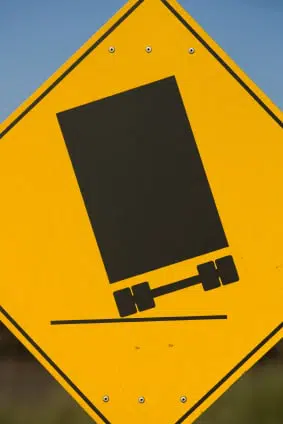New Transportation Safety Laws? Maybe Not…
New Administration = Rollback of Transportation Safety Legislation
A new presidential administration brings many changes. One such change under the Trump administration is the rollback of many federal transportation safety rules and regulations. At least a dozen safety rules that were under development or already adopted have been repealed, withdrawn, delayed, or put on the back burner during Trump’s first year in office, according to an Associated Press review of the Department of Transportation’s rulemaking activities.
The decision to sideline these safety laws comes from an effort to balance safety with the economic costs of the regulations. So which costs more: regulations or American lives?
Which Rules Have Been Sidelined?
If you want to understand the potential dangers of these changes, you need to know which rules have been sidelined:
Automobiles
- A 2016 proposal that required new cars and light trucks to be able to communicate wirelessly with each other to avoid collisions. The technology is considered one of the most promising methods for reducing traffic fatalities. The White House moved the proposal to its long-term agenda, which means no action is expected until the end of the fiscal year on September 30th, if at all.
- A 2016 rule that required new hybrid and electric vehicles to emit sounds when traveling at low speeds (to alert pedestrians and cyclists to their approach). This rule, the government estimates, would prevent 2,800 injuries over the life of each model year of the vehicles. The Department of Transportation has extended the deadline for automakers to comply, giving them until September 1, 2020.
Commercial Trucks and Buses
- A 2016 proposal that required software in new heavy trucks to be set to limit speeds, with possible maximums being 60, 65, or 68 mph. (About 1,100 people are killed annually in truck crashes on roads with speed limits exceeding 55 mph.) The White House moved this proposal also to its long-term agenda.
- A rule in the early stages of writing that required states to inspect commercial buses and other passenger-carrying vehicles once a year. Since 1990, there have been more than 220 commercial bus crashes and fires, resulting in at least 484 deaths and 4,618 injuries, according to Advocates for Highway and Auto Safety. The Department of Transportation withdrew the rule.
- An early-stage rule that required commercial truck and bus drivers to be screened for sleep apnea. The National Transportation Safety Board, which recommended the screening, has identified untreated sleep apnea as the cause of at least 13 accidents it has investigated. The Department of Transportation withdrew the rule.
Safety Rules “Written in Blood”
These transportation safety rules have to come from somewhere, and unfortunately, they often come about after people have been injured or killed. In October 2016, for example, a bus crashed into a big rig whose driver fell asleep during a freeway closure. Traffic was stopped briefly for utility work, but the truck remained stopped for two minutes after traffic had resumed flowing because the driver had fallen asleep.
The bus, carrying people back from a desert casino, rear-ended the stopped truck at 76 mph. The bus driver and 12 passengers were killed, and 30 passengers were injured. The National Transportation Safety Board reported that among multiple safety regulation violations, the trucker might have suffered from undiagnosed sleep apnea. The resulting fatigue was the primary cause of the accident (US News).
In this case, both speed limit regulations and the proposed rule to require drivers to be screened for sleep apnea could have made the crash less severe, or possibly prevented it altogether. While crashes due to a specific medical condition like sleep apnea may seem few and far between, crashes due to truckers’ chronic fatigue are not. Issues with sleep regulation and fatigued driving are already plaguing the commercial trucking and bus industry. Drivers are willing to sacrifice sleep to get ahead, and the effects are disastrous.
The Precarious Balance Between Safety and Economic Sense
If the above regulations come from real-life incidents, and are predicted to save thousands of lives, why is the Trump administration sidelining them? Let’s be fair. While it may be easy to paint a picture of government corruption and corporate greed, one answer is that the Department of Transportation must balance the expected safety benefits with the cost burden of the regulations.
When the DOT believes that the data on the number of lives saved is not strong or reliable enough, it can’t argue that it’s worth the cost to the trucking industry. Whether this is a good measurement…we leave it to you to decide.
For example, in regard to the proposed truck speed limit rule, some groups argue that limiting the speed of trucks would create dangerous speed differences between passenger cars and commercial trucks. In addition, the DOT said the sleep apnea screening rule is unnecessary and redundant because it is already being addressed through other programs and proposed rules (AP News).
At the end of the day, we know that companies and industries are looking out for their own best interests. If deregulating the industry helps trucking companies increase their profit margins, then they will push for deregulation, putting safety on the back burner. We’ve seen it in the many trucking accident cases we’ve handled as lawyers, from both sides of the table.
We’ll try not to leave you with a lot of philosophical questioning, but…some might say that saving human lives is priceless. When it comes to keeping Illinois drivers safer on the road, let’s err on the side of too many laws. Less isn’t always more, folks.
If a Truck Crashes Into You, You Probably Need Our Help
When semis collide, it’s almost always a life-changing event for people in passenger cars. If that’s you, or a loved one, talk to a Belleville truck accident attorney at Hipskind & McAninch, LLC. These claims are especially complex (we have to attend special seminars every year to keep on top of the industry), and trucking company’s insurers really don’t like paying out. But we can handle it. We used to work for the other side, and we know how to work these claims smarter AND harder.
For a free consultation with John Hipskind and Brady McAninch, please call (618) 641-9189. Don’t worry. If we represent you in a truck accident claim, you only pay us if we get you a satisfactory settlement. We’ll take care of you.

Category:
